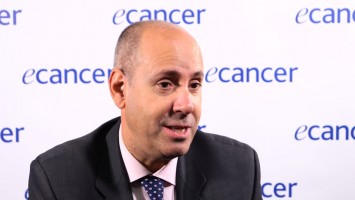ASCO 2013
Paclitaxel dosing equally effective in preventing breast cancer progression
Dr Andrew Seidman - Memorial Sloan-Kettering Cancer Center, New York, USA
This is a unique trial; it’s really the first study that compared the role of further surgery under the arm or full axillary lymph node dissection to radiation therapy as a means of preventing recurrence and hopefully with the goal of reducing side effects and swelling in the arm.
What did they find?
These were women who had an involvement of a sentinel lymph node, which is one of the first draining lymph nodes under the arm. The standard management has historically been full lymph node dissection and that often leads to lymphoedema or swelling in the arm, pain in the shoulder. So what this randomised trial showed was that radiotherapy offered equivalent control of cancer, the recurrence rates were equal and they were quite low in both arms. But the advantage for radiotherapy here was that there was far less swelling or lymphoedema of the arm and hand one and five years later. So this represents a new option.
What does this mean for how we approach patients?
I think when women present with early stage breast cancer they are often so-called processed differently. In some centres there is often an initial multidisciplinary encounter where the patient will see the breast surgeon, medical oncologist, which is what I am, and a radiation oncologist almost all on the first day or from the get go. In other care delivery environments it may be more serial – the surgeon first, later on the medical oncologist and referral to radiation for management of the axilla often happens later. So I think that these results underscore early dialogue and a team approach from the very beginning to choose the best management of the axilla for individual patients.
What do you make of this?
This is going to clearly alter practice. Surgeons don’t necessarily enjoy doing more surgery and they certainly don’t enjoy doing more surgery that can cause late side effects and even early side effects. So this offers an option other than more extensive surgery under the arm for some patients. There are certain patients who particularly are at higher operative risk than others and for those patients it’s going to be very welcome news.
What is your advice to doctors moving forward?
Work as a team; talk together; think about the big picture and the treatment plan often is multidisciplinary. There is now another option besides full lymph node surgery under the arm and that is radiation therapy.
What patients are we looking at?
Yes, I think it is important to recognise that the patients in this trial had to meet an eligibility criteria which was that they could not have clinical evidence of lymph node involvement. So their surgeon could not feel enlarged lymph nodes under their arm or find cancer by a biopsy prior to going for their sentinel node biopsy. Patients sometimes will present with more locally advanced breast cancer where they can even have bulky involvement of the lymph nodes and those are not patients who are studied in this trial. For those patients still surgery and radiotherapy together remains the standard of care.








